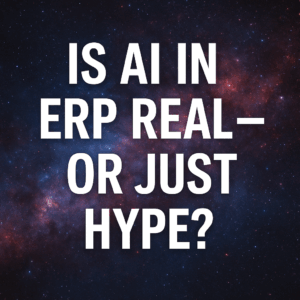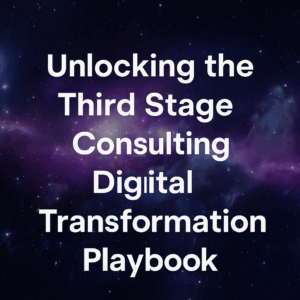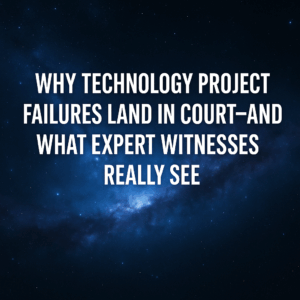Change management is the most critical success factor for any successful digital transformation. What exactly are the deliverables that you should focus on as you create your organizational change management plan? That is what we want to talk about today.
When we help our clients throughout the world with their digital transformations, we find that change management is the key success factor for an effective digital transformation. The reason for this is that the people side, or the human side of change, is the most important and the most difficult part of digital transformation. Unfortunately, too many organizations and project teams do not fully understand what change management means, how it can add value, and what the deliverables are that will help ensure that their change program is delivering value.
So, what we want to do today is talk about the seven deliverables that we think are most important for a successful change program within digital transformation.

Table of Contents
ToggleChange Readiness Assessment
The first key deliverable to focus on in a change management program is a Change Readiness Assessment. The Change Readiness Assessment is really your way of getting a lay of the land and understanding the strengths and weaknesses of the current organizational environment. This assessment will look at the culture of the organization, the way leadership is viewed, the communication style, and a plethora of other change variables that are important to understand in order to define a change strategy that will best fit your situation.
Now, there are typically two parallel paths to completing an organizational readiness assessment. The first is a quantitative survey that is anonymous and meant to capture information from employees in high volumes. This survey helps to understand the potential strengths and weaknesses of the organization, including cultural strengths that we want to preserve and weaknesses that we need to address as part of our change program.
The second path is to conduct qualitative focus groups with different subsets of people throughout the organization to gather qualitative information that complements the quantitative information obtained through the anonymous employee surveys. Typically, we roll out these assessments as part of an early stage of a change management program. We then analyze the data and results to understand what we need to do to define a change strategy and plan that is more prescriptive and specific to what we are trying to accomplish as an organization.
Next, the overall change management plan is another key deliverable for an effective change management strategy. The reason I didn’t mention the change management plan first is that you need input from your change readiness assessment to understand what you need to do from a strategic and planning perspective on the change management program. For example, if you find that there’s a lack of communication and collaboration between different departments or business units within your organization, that becomes a fundamental strategy for how you’re going to affect change within the organization. Therefore, we create the change management plan after we’ve done the organizational assessment so that we can be prescriptive and specific about change management tactics that we know will work based on what we’re trying to accomplish in the current state of the organization.
Ultimately, this change management plan should become part of the overall program plan too. Typically, you’ll have a technical workstream or a technical implementer managing the software implementation, and we need to figure out how to integrate this change plan into the overall program. It’s quite likely that the change management strategy and plan might influence, or should influence, the overall program plan and the overall program duration. This is because changing people, behavior, and an organization is a lot more difficult and time-consuming than deploying new technology. Assuming that you’re not deploying technologies just to deploy technology and you want to get people to use the technology and get real business value out of it, you need to make sure that the change management plan incorporates and integrates well into the overall program plan.
Change Impact Assessment
One of the most fundamental deliverables in change management during the design stage of implementation is articulating the impacts that new technologies and processes will have on the organization. During design workshops for new technologies, we consider the future state and the new processes, and then assess the impact on different work groups, departments, and business units. This is essential for a couple of reasons. First, it enables us to deploy change strategies and tactics that address specific change impacts that will affect the organization. Second, by understanding the change impact from the current state to the future state, we can better comprehend the overall impact on the organization. Some organizations may experience incremental change, while others may undergo massive overhauls that require significant changes in the way people perform their jobs. We need to comprehend the magnitude and nature of the change, as well as how people’s jobs will be affected. Ultimately, this knowledge is critical in defining other downstream deliverables, such as the training plan, communications plan, and process improvement plan, which are all dependent on the change impact assessment in a digital transformation.
Organizational Design Documentation
When deploying new technologies and business processes, it is impossible to do so without impacting people’s jobs. In other words, new technology and processes will change the way people work, their roles, and their responsibilities. For instance, if we are automating business processes, getting rid of redundant manual tasks, and eliminating spreadsheets, we need to determine what this means for the organization. How will people’s jobs be designed in the future state of automation? It is not enough to remove manual tasks. We must figure out how to replace jobs and the work they do with new roles and responsibilities. Organizational design is critical, and its importance cannot be overstated.
When organizations fail to define their future state organizational design, they create a perceived lack of understanding about the impact on the organization. Without the organizational design work stream and deliverable, we will not understand how people’s jobs will change, and the organization’s impact. Therefore, it is essential to define the new organization’s look, particularly if we are undertaking significant reorganization efforts as part of our transformation. For example, consolidating different HR departments into one consolidated HR department or consolidating multiple accounting groups into one shared service accounting group across the organization are significant changes that require a clear vision of the future state. Without a clear vision, change management efforts will not be effective.
Stakeholder Assessment
At the end of the day, organizations are made up of individual human beings, and a digital transformation’s ability to succeed is dependent on those humans and those individuals supporting the project and enabling the project. Some people within an organization have more power and influence than others, either because they’re executives or leaders within an organization, or because they have a high degree of tenure; they’ve been around a long time, or because they’re highly respected within the organization. So, there are different reasons why certain people within an organization have more power and influence over an organization. Therefore, it’s important that we understand who these stakeholders are and make sure we understand where they stand in the whole transformation. Are they supporters of the project, are they resisting the project, are they against it, or are they somewhere in the middle? We’ve got to have a plan of how we deal with this person by person.
For example, let’s just say you have a mid-level manager that manages the entire function that’s going to deliver the most business value of the entire transformation. It’s a situation where this transformation is dependent on this person’s group or department. Now, if this person is resisting change and doesn’t like the idea of putting in new technologies, it’s safe to assume that you’re not going to realize that business value because his or her organization is going to resist that change, and they’re not going to be on board with it because he or she, the leader, is not on board with it either. So, we need to understand who these stakeholders are so that if they’re advocates, we can leverage them and use them to help spread the advocacy. If they’re against the project, we can start to neutralize or blunt the impact of their resistance, and if they’re neutral, we have a pretty good chance of converting them to advocates if we do our jobs right.
Stakeholder assessment and having a stakeholder management plan is one of the key deliverables and most important activities within an effective change management strategy.
Communications Plan
In an organization’s understanding of what the future state is going to be, what’s expected of them, how their jobs are going to change, and what their contributions to the future state organization are going to be, is largely dependent on the communications they receive from executive leadership. Therefore, having a deliberate communications plan is critical to ensure that we communicate clear messages to the organization throughout the transformation.
Now, there are a couple of different layers of communication. The top layer, which I would call the more strategic or project-based layer of communication, is keeping people in the loop and making them aware of what’s happening with the transformation. This includes information about why we’re going through the transformation, what the timing is, and what to expect with training and testing.
However, the more important layer that most organizations overlook is the more detailed and targeted communication. This is where the change impact assessment and stakeholder assessment that I talked about earlier are such important inputs to ensure that we are targeting the right communications to the right people at the right time. People don’t just want to know the status of the project, which is the high-level communication I talked about. It’s important, but it’s just barely scratching the surface. What people really want to understand is what’s in it for them. How does this change affect them, and what does their future look like in this post-digital transformation world that they will be working in?
Therefore, we need to have a very clear communications plan that’s targeted to what people want to know and how it affects them individually or as a work group or department. We need to make sure that we are getting the communication out as early as possible so that we’re not waiting until training right before go-live for people to hear some of these messages for the first time. Unfortunately, that’s too often what happens in digital transformations, and people start to freak out during the training courses because they hadn’t heard about these massive changes to their jobs until now that they’re in training.
A way to mitigate that and to accelerate the freak-out process, to use a technical term, is to make sure that we have that communications plan early and often. We need to give people two-way communication and an opportunity to understand and react to what the changes are going to be for them individually and as a work group.
Training Plan
Now, last but not least, one of the key deliverables for an effective change management strategy is the training plan. This is where you identify what you’re going to train people on, how you’re going to train them, who will conduct the training, and track who has completed the training.
Let me start with the content of a training plan. It’s essential to note that you’re not just training people on how to use a new system. Unfortunately, that’s how a lot of change practitioners think about change management and training. Employees don’t care about using technology. They care about doing their job. Technology is one part of it, but what they really need to understand is what their business process looks like, what their responsibilities are, and how the technology will help them do that. There’s a business process component that’s really important to augment the training of technology, and understanding how transactions work within the system. Those are two very different things, but you need to cover both of those things within a training program. Ideally, you would have communicated some of these issues and topics to people before they got to training. By the time they get to training, they already understand what the major changes of their job are, what’s expected of them. Now, they just need to be shown what these new processes look like and how they’re going to look in the new technology. It’s more of a reinforcement rather than a first-time communication of some of the major changes happening in the organization.
An effective training plan should ensure that you’ve got the right people in the right training at the right time. You don’t want to take a shotgun approach and train people on all the different functions and processes within a new system. Instead, you want to focus on what they need to know. They probably need to know some upstream and downstream activities as well, but you want to design the courses in a way that’s very specific to their jobs and what they need to know. You also want to make sure you do the training at the right time. You want to make sure you’re not training them too early in the process to where they forget by the time you go live on new technology.
Finally, your training plan should have a way of tracking who has completed training and what the overall user adoption is. You want to measure your training efforts so you can actually measure competency. That way, you know prior to go live whether or not your people are ready and fully understand how these new systems and processes work. The training plan is a capstone deliverable that comes toward the end of a project, but it’s very important to make sure you get it right because it’s your last line of defense before go-live to make sure that people understand and are comfortable with the changes, the new processes, and the new technologies.
These are the seven most important deliverables from a change management perspective as you go through your digital transformation.
If you are looking to strategize an upcoming transformation or are looking at selecting an ERP system, we would love to give you some insights. Please contact me for more information eric.kimberling@thirdstage-consulting.com





